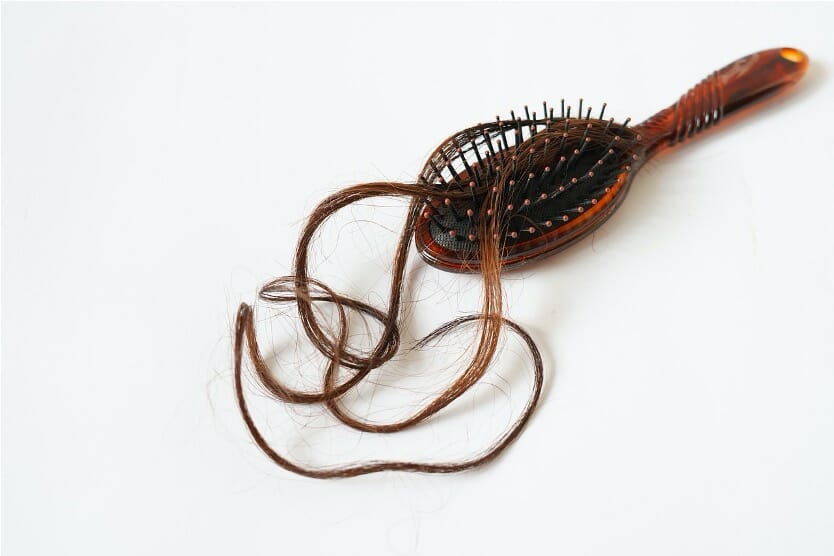Quick Summary: Do You Lose More Hair In Winter?
Winter & Hair Loss: As temperatures drop and daylight hours shrink, many wonder if these changes cause hair loss. Winter can indeed impact hair health due to various factors.
Research Insights: Studies and search trends indicate that hair shedding peaks in late summer and early fall, but additional winter hair loss can occur due to factors such as reduced sunlight and vitamin D deficiency, dry and cold weather, and changes in hair care routines.
Managing Winter Hair Loss: To reduce hair shedding during the colder months, keep your scalp and hair moisturized, use lukewarm water for showers, limit heat styling, and maintain a nutrient-rich diet.
Key Takeaway: Winter hair loss varies from person to person, but is often manageable with proper care. If excessive shedding persists, consulting a hair loss specialist is advisable to explore effective treatments.
While summer often gets the spotlight for seasonal hair shedding due to increased sun exposure and heat, winter brings its own set of challenges that may impact hair health. As temperatures drop and daylight hours shrink, many people wonder if these changes influence hair loss.
Let’s explore the phenomenon of winter hair loss, integrating scientific findings with practical advice.
Winter and Hair Loss
Research and Google search trends suggest that hair shedding peaks in late summer and early fall across different ethnic groups. Research studies also show that there is a global pattern for seasonal hair shedding1–4. In those who notice a minor increase in hair shedding during these months, this information can be particularly reassuring as it highlights that such changes are a normal part of the hair’s growth cycle, and not usually indicative of alopecia or ongoing hair loss conditions.
Hair loss during winter can worsen, however, due to the following factors:
- Reduced Sunlight and Vitamin D Deficiency: Lack of sufficient sunlight during winter can lead to decreased Vitamin D levels, which is crucial for hair follicle cycling. Research suggests that lower Vitamin D levels in winter might correlate with increased hair shedding5.
- Dry and Cold Weather: Winter’s harsh, cold air combined with indoor heating can strip moisture from the scalp and hair, making it more prone to breakage and shedding.
- Changes in Hair Care Routines: During winter, people often change their hair care routines, such as using hotter water for showers and more heat styling to combat outdoor cold, which can exacerbate hair fragility and loss.
Managing Winter Hair Loss at Home
To manage, and possibly reduce hair shedding during the colder months, consider these practical tips:
- Moisturise Your Scalp and Hair: Use hydrating shampoos to combat dryness. Applying a deep conditioning treatment or hair mask weekly can also help maintain hair health. For those interested in exploring hair oils, our comprehensive blog on the best oils for hair growth is packed with valuable insights to enrich your hair care journey.
- Lower Shower Temperature: Hot showers can dehydrate your skin and scalp, leading to dry, brittle hair. Opt for lukewarm water instead.
- Limit Heat Styling: Reduce the use of blow dryers, flat irons, and curling irons. When heat styling is necessary, use a heat protectant spray beforehand to minimize damage. Interestingly, research reveals that although using a hair dryer causes more surface damage than natural drying, using a hair dryer at a distance of 15 cm with continuous motion causes less damage than air drying6.
- Diet and Supplements: Ensure your diet is rich in vitamins and minerals that support hair health. Consider supplements like Vitamin D and Omega-3 fatty acids after consulting with a healthcare provider7.
When to Seek Professional Help
If you notice significant hair thinning, or if shedding is excessive and persistent, it’s advisable to consult with a hair loss specialist, such as our clinic.
Treatments for hair loss vary based on the underlying cause, but may include:
- Topical treatments: Products containing Minoxidil (Regaine) can help stimulate hair growth. Minoxidil potentially widens tiny blood vessels in the scalp, which improves blood flow to hair follicles. This process revives and extends the anagen (growth) phase of the hair cycle, shortens the telogen (resting) phase, stimulates hair follicle activity, increases follicle size, and boosts the production of crucial growth factors for hair development8.
- Prescription medications: Drugs like Finasteride are used for treating pattern baldness by reducing hormones that trigger hair loss. Dihydrotestosterone (DHT) is a hormone that is derived from testosterone. In people with androgenic alopecia/male pattern baldness, too much DHT causes hair follicles to shrink and eventually stop growing back. Finasteride works by indirectly reducing DHT. By reducing DHT levels, Finasteride can help to prevent the process of hair loss and promote hair regrowth in men9.
- Hair transplant surgery: For more severe cases, or where cosmetic concerns are significant, surgical options can be considered. The procedure involves taking hair follicles from a donor area (usually the back of the scalp) and transplanting them to thinning or bald areas. Two main techniques are used: Follicular Unit Transplantation (FUT) and Follicular Unit Extraction (FUE). Both methods have high success rates and can produce natural-looking results10. For more information about types of hair transplant surgery, check out out blog post: FUE Vs. FUT
Conclusion
While winter may not traditionally be associated with increased hair loss, the seasonal changes it brings can stress hair in multiple ways. By understanding these impacts and adjusting care routines accordingly, individuals can better manage their hair health during the colder months. If you’re worried about your hair, please do not hesitate to contact The Treatment Rooms for advice and care. Prevention and proactive treatment are key to maintaining robust hair year-round, regardless of the season.
References
- Kunz, M., Seifert. B. and Trueb, R. M. (2009) ‘Seasonality of hair shedding in healthy women complaining of hair loss’, Dermatology, 219, pp. 105–110. Available at: https://www.zora.uzh.ch/id/eprint/20699/1/216832.pdf
- Liu, C., Yang, J., Qu, L., Gu, M., Liu, Y., Gao, J., Collaudin, C. and Loussouarn, G. (2014) ‘Changes in Chinese hair growth along a full year’, International Journal of Cosmetic Science, 36(6), pp. 531–536. Available at: https://onlinelibrary.wiley.com/doi/10.1111/ics.12151
- Hsiang, E. Y., Semenov, Y. R., Aguh, C., Kwatra, S. G. (2018) ‘Seasonality of hair loss: a time series analysis of Google Trends data 2004-2016’, British Journal of Dermatology, 178(4), pp. 978-979. Available at: https://onlinelibrary.wiley.com/doi/epdf/10.1111/bjd.16075
- Buontempo, M. G., Ingrassia, J. P., Shapiro, J., and Lo Sicco, K. (2023) ‘Seasonal trends in hair loss: A big data analysis of Google search patterns and their association with seasonal factors’, Journal of the European Academy of Dermatology and Venereology, 37, e1458–e1460. Available at:https://onlinelibrary.wiley.com/doi/10.1111/jdv.19364
- Amor, K. T., Rashid, R. M., & Mirmirani, P. (2010) ‘Does D matter? The role of vitamin D in hair disorders and hair follicle cycling’, Dermatology Online Journal, 16(2). Available at: https://escholarship.org/uc/item/8s34p6b7
- Lee, Y., Kim, Y. D., Hyun, H. J., Pi, L. Q., Jin, X. and Lee, W. S. (2011) ‘Hair shaft damage from heat and drying time of hair dryer’, Annals of dermatology, 23(4), pp. 455–462. Available at: https://doi.org/10.5021/ad.2011.23.4.455
- Rajput, R. (2022) ‘Influence of nutrition, food supplements and lifestyle in hair disorders’, Indian Dermatology Online Journal, 13(6), pp. 721. Available at: https://www.ncbi.nlm.nih.gov/pmc/articles/PMC9650738/
- Suchonwanit, P., Thammarucha, S., and Leerunyakul, K. (2019) ‘Minoxidil and its use in hair disorders: a review’, Drug design, development and therapy, 13, pp.2777–2786. Available at: https://doi.org/10.2147/DDDT.S214907
- Nestor, M. S., Ablon, G., Gade, A., Han, H., and Fischer, D. L. (2021) ‘Treatment options for androgenetic alopecia: Efficacy, side effects, compliance, financial considerations, and ethics’, Journal of Cosmetic Dermatology, 20(12), pp. 3759–3781. Available from: https://www.ncbi.nlm.nih.gov/pmc/articles/PMC9298335/
- Dunkin, M. and Gardner, S. (2022) Hair Transplants: What to Expect. WebMD. Available at: https://www.webmd.com/skin-problems-and-treatments/hair-loss/hair-transplants
Share:
Authored by
Reviewed by
Book a Consultation
Related Blogs
Andros Townsend Transplant: Before, After, and His New Hairline
March 11, 2025
He’s best known for his days spent kicking a ball around, but Premier League footballer Andros Townsend…
Harry Kane Hair and Hairline
March 11, 2025
Harry Kane has suffered from a common condition of hair loss called male pattern baldness. This has…
Joe Swash Transplant: Before, After, and His New Hairline
March 11, 2025
Former ‘EastEnders’ actor and ‘I’m a Celebrity’ contestant Joe Swash has spoken very candidly about receiving multiple…
Guide To Finasteride For Hair Loss
March 4, 2025
One of the main effective medications in treating hair loss is Finasteride, which is often prescribed to…
When Can You Safely Wear a Beanie After a Hair Transplant?
March 1, 2025
Quick Summary Cap Recommendations: Light, breathable caps like snapbacks or trucker’s caps are advisable if you need…
Dutasteride and Hair Loss
February 23, 2025
Dutasteride is a medication that can be prescribed to men suffering from male pattern hair loss (androgenic…
Receding Hairline In Women – What You Need To Know
February 20, 2025
Quick Summary What is a Receding Hairline? In women, a receding hairline is often more subtle than…
Norwood 2 Hair Loss And Hair Transplants
February 20, 2025
Norwood 2 is a specific stage of hair loss that forms part of the Norwood Scale. During…
Can You Get A Buzz Cut After A Hair Transplant?
February 19, 2025
Quick Summary: Buzz Cut After Hair Transplant What is a Buzz Cut?: After a hair transplant, a…










